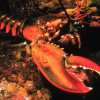A loss of smell and taste sense has been reported by some people later diagnosed with SARS-CoV-2, the coronavirus that causes Covid-19. Now a new study has revealed why...
Intriguingly, about half of patients diagnosed with SARS-CoV-2 infection report losing their senses of smell and taste early on in their illness. Now, scientists have discovered that two cell types found in the nose, and which are normally involved in the olfactory (smell) and gustatory (taste) systems, are key targets of SARS-CoV-2. Damage to these cells caused by the viral infection would account for the smell and taste symptoms reported by Covid-19 cases.
The findings are the work of researchers at the Wellcome Sanger Institute in Cambridge, who are part of a consortium called the Human Cell Atlas Lung Biological Network. They have shown that ciliated and mucus-producing goblet cells in the nose have high levels of two proteins necessary for viral entry. One protein is ACE2 (angiotensin converting enzyme 2), which the virus binds in order to penetrate into the cell. The other is a protein-digesting enzyme called protease TMPRSS2. When the SARS-CoV-2 coronavirus makes contact with the cell surface, this protease makes a cut in the spike proteins found on the viral surface, activating them so they can grab ACE2 molecules and infect the cell.
To pinpoint which cells are most vulnerable to coronavirus infection, the researchers looked at the pattern of genes turned on in more than 20 different tissue types to see which ones were expressing both ACE2 molecules and the TMPRSS2 protease.
Cells in the nose were found to have high levels of both ACE2 and TMPRSS2, which aligns with our current understanding of transmission routes: coronaviruses spread through inhaled respiratory droplets expelled from an infected person, and also by touching contaminated surfaces and then touching your nose or mouth.
The goblet and ciliated cells line the nasal passages making them relatively easy to access by the virus. This explains the higher transmission rates of SARS-CoV-2 compared with close viral relatives like the MERS-CoV coronavirus, which targets receptors found only on cells situated much more deeply within the respiratory tract making that virus correspondingly harder to catch.
As well as expression in the nose, ACE2 was also found at other barrier membranes, such as in the gut and the membranes around the eyes. This would suggest that SARS-CoV-2 can also infect though the eyes and by faecal-oral transmission, although the role of these sites in the spread of Covid-19 isn't known yet. Indeed, having identified that tissues outside the respiratory track can express ACE2 and TMPRSS2, we now need to investigate if these other tissues are actively infected by SARS-CoV-2.
According to Sarah Teichmann, senior author on the paper describing the new findings, “this information can be used to better understand how coronavirus spreads. Knowing which exact cell types are important for virus transmission also provides a basis for developing potential treatments to reduce the spread of the virus.”
This highly collaborative work marks the importance of cross-border communication, and provides a starting point for further exploration into SARS-CoV-2 infection in cells beyond the respiratory system.










Comments
wow great information..
wow
great information..
Add a comment